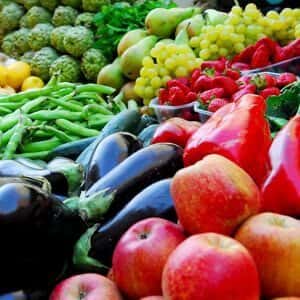
Most health experts emphasize the importance of eating lots of vegetables, but which ones have the least pesticide residue? If you want to avoid pesticides as much as possible, but can’t afford to buy everything organic, which products should you focus on?
The Dirty Dozen for 2018:
Shoppers can use the lists developed by the Environmental Working Group to guide their purchases. The group has just issued its annual report on the dirty dozen and the clean fifteen (EWG April 10, 2018). The Environmental Working Group is a nonprofit nonpartisan organization that educates citizens about the environmental hazards found in food, water, cosmetics, household cleaners and other common products.
This year’s list of the most contaminated produce is actually a baker’s dozen. At the top of the list are strawberries, with detectable residues from 20 pesticides. The list goes on to include spinach, nectarines, apples, grapes, peaches, cherries, pears, tomatoes, celery, potatoes, bell peppers and hot peppers. When possible, these are products that should be purchased as organic foods. That’s because the conventionally grown products are so often contaminated. Aiming for organic strawberries, apples or spinach is especially important for those feeding children. Young bodies may be more susceptible to negative effects from pesticides.
The Clean Fifteen for 2018:
The EWG also determined the least contaminated produce—the clean fifteen. These are vegetables and fruits you can be confident in eating, whether or not an organic version is available. They include avocados, sweet corn (non-GMO), pineapples, cabbages, onions, frozen sweet peas, papayas, asparagus, mangoes, eggplants, honeydew melons, kiwis, cantaloupes, cauliflower and broccoli.

